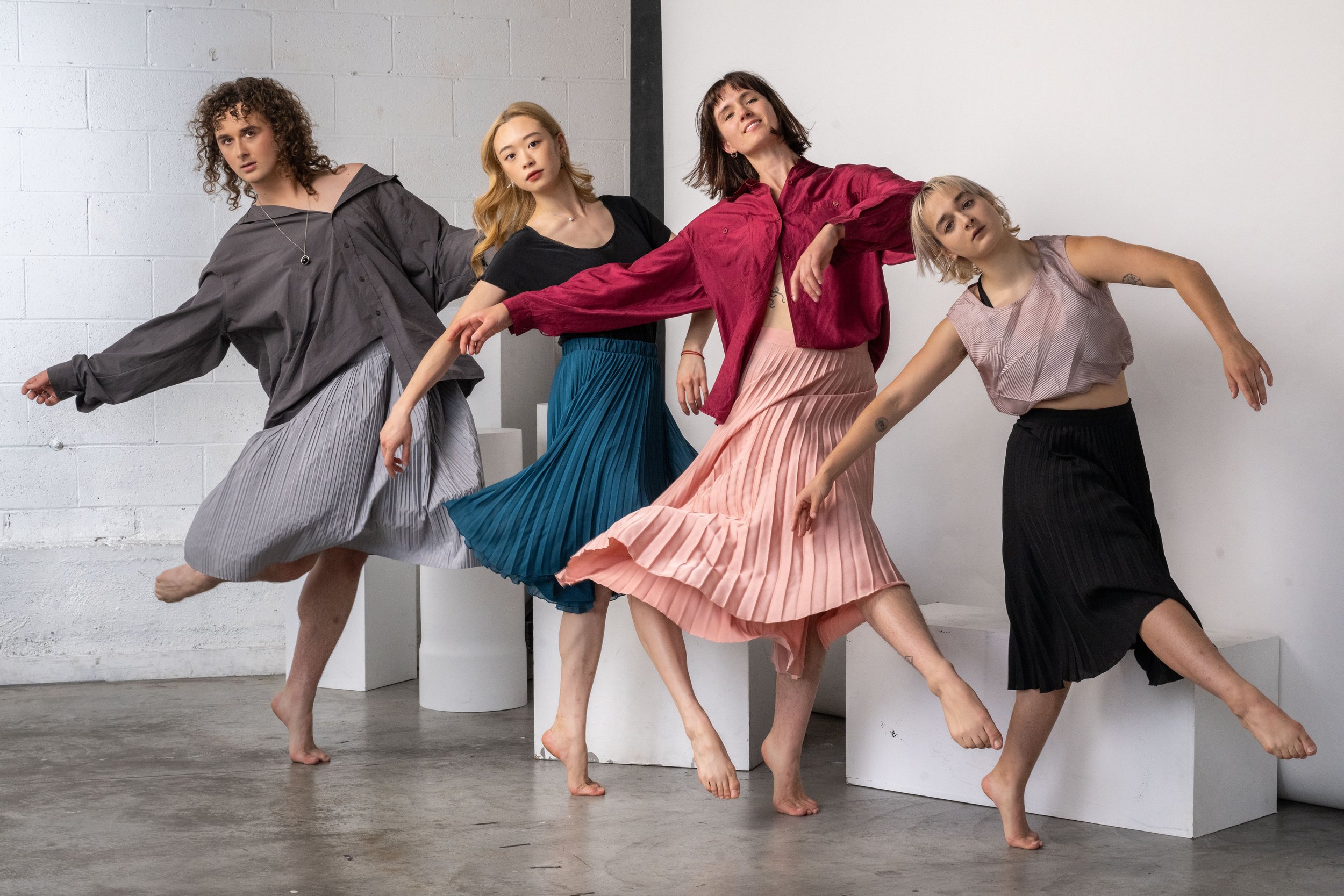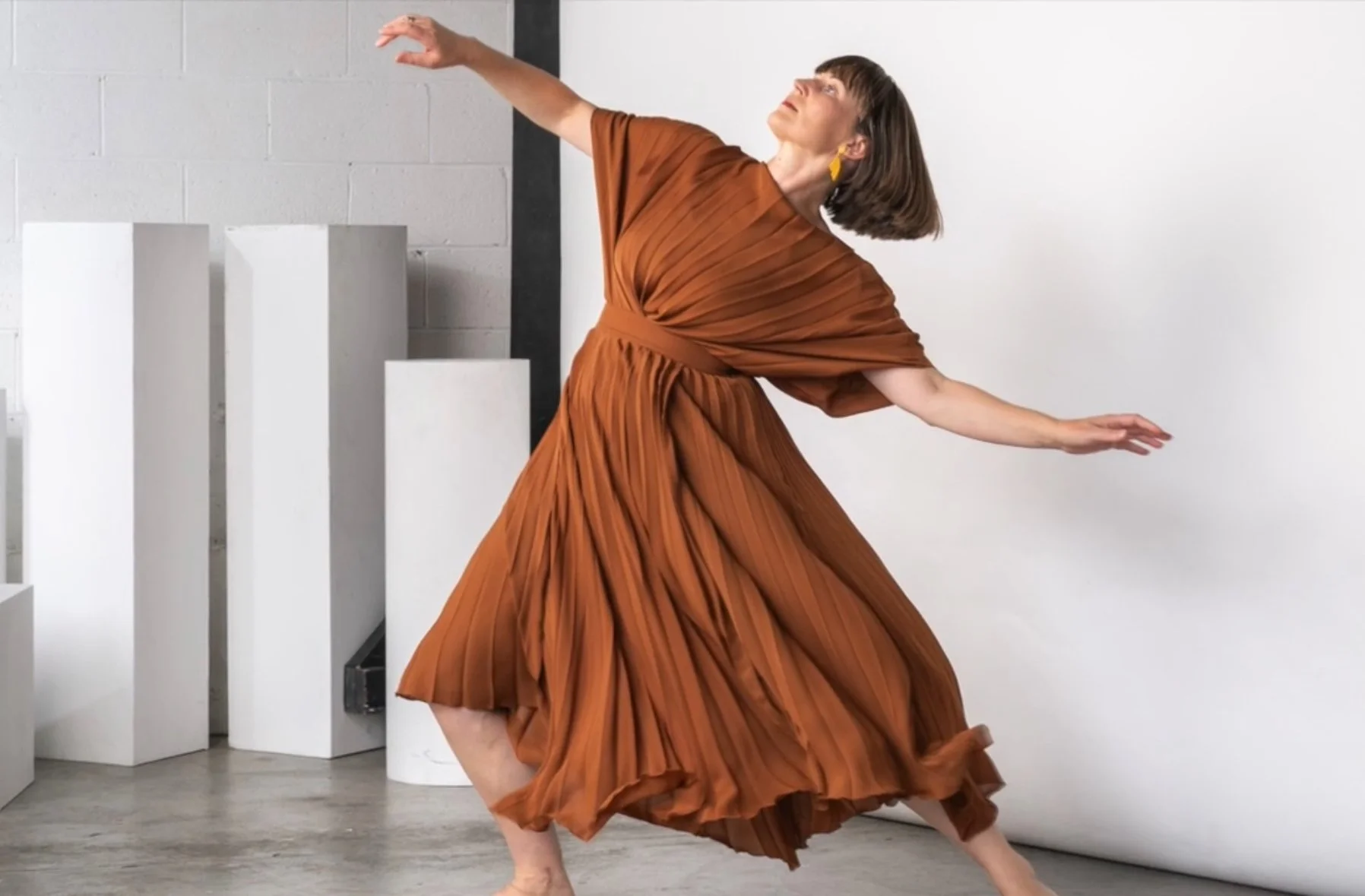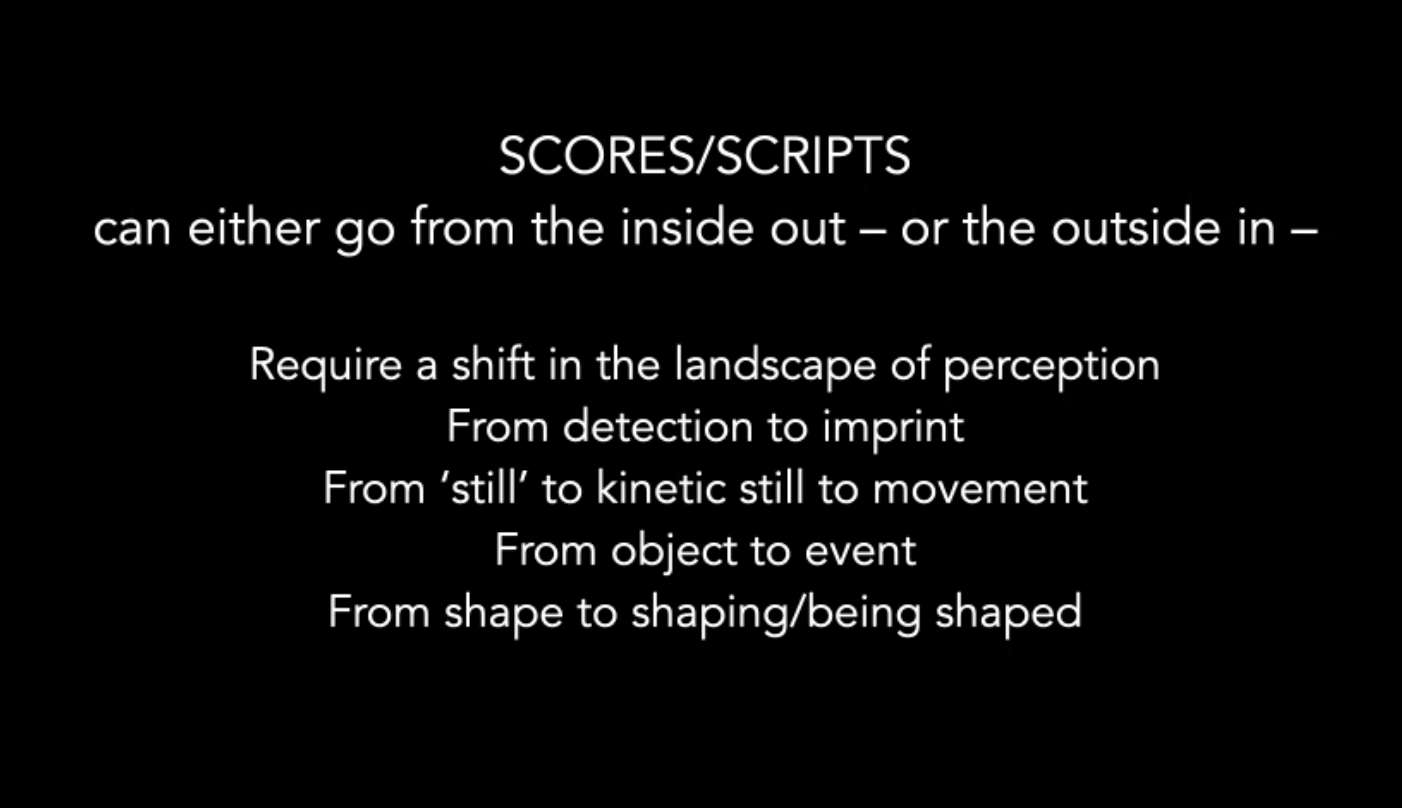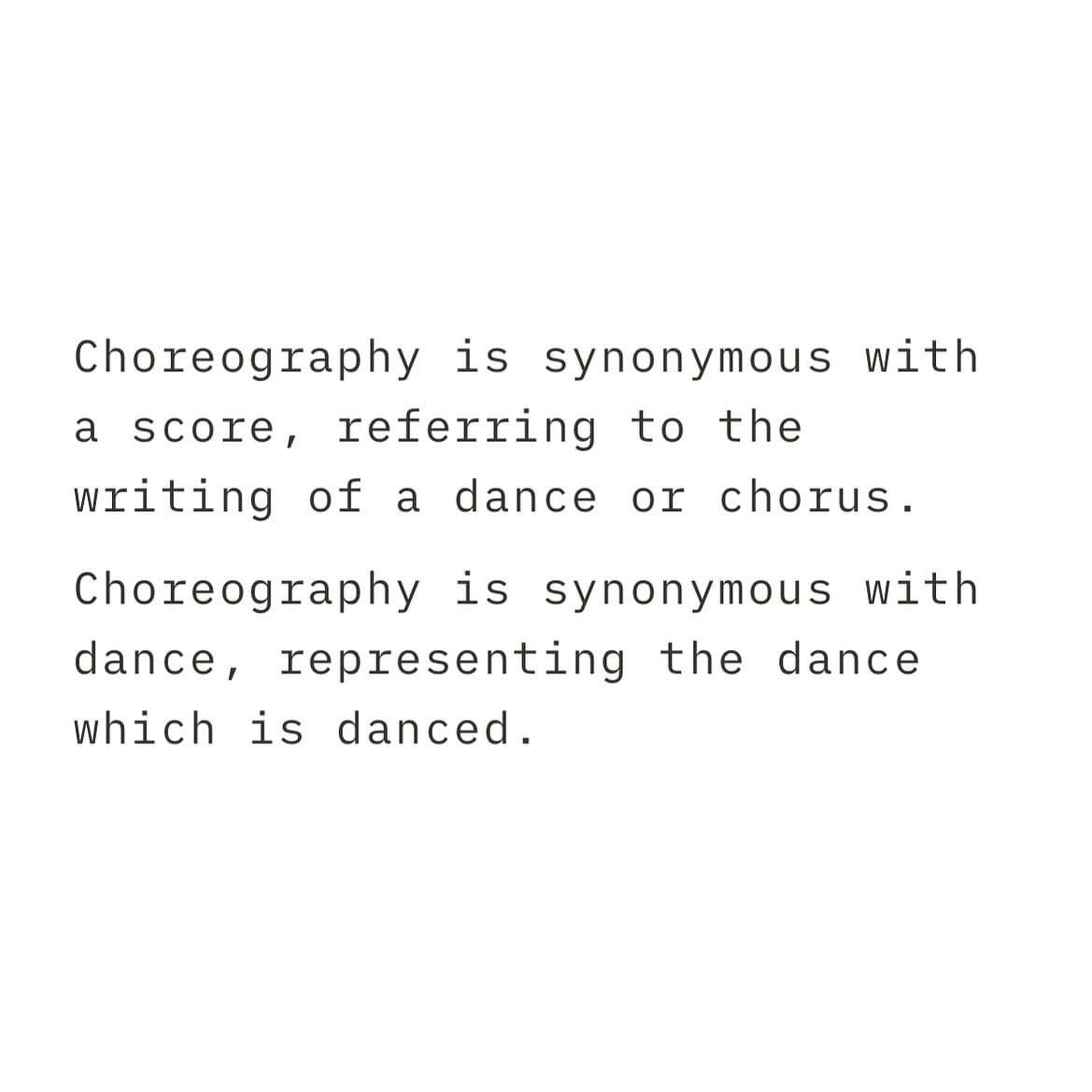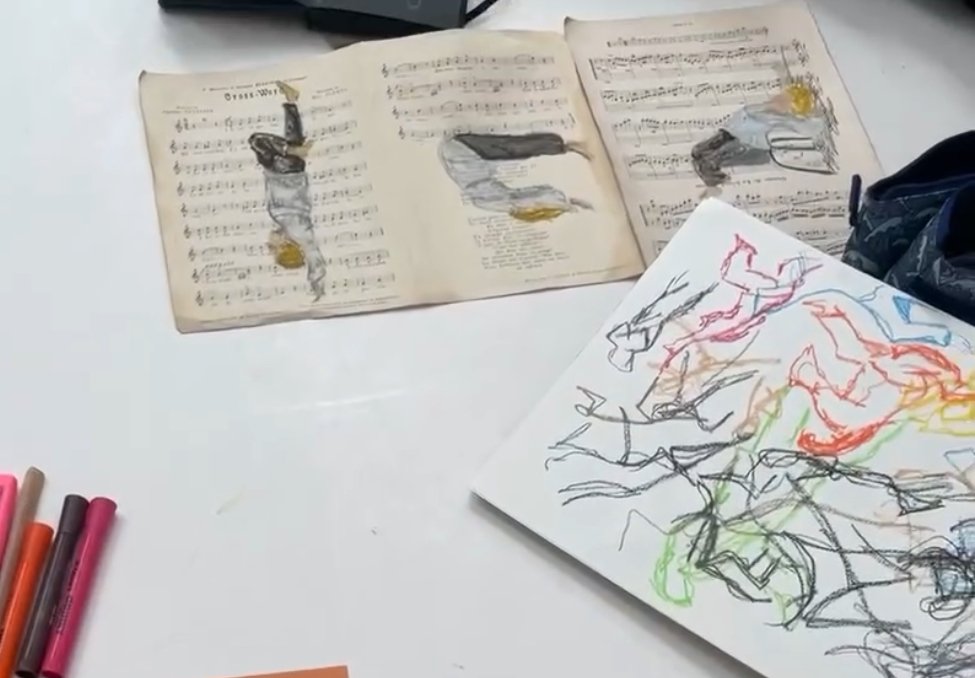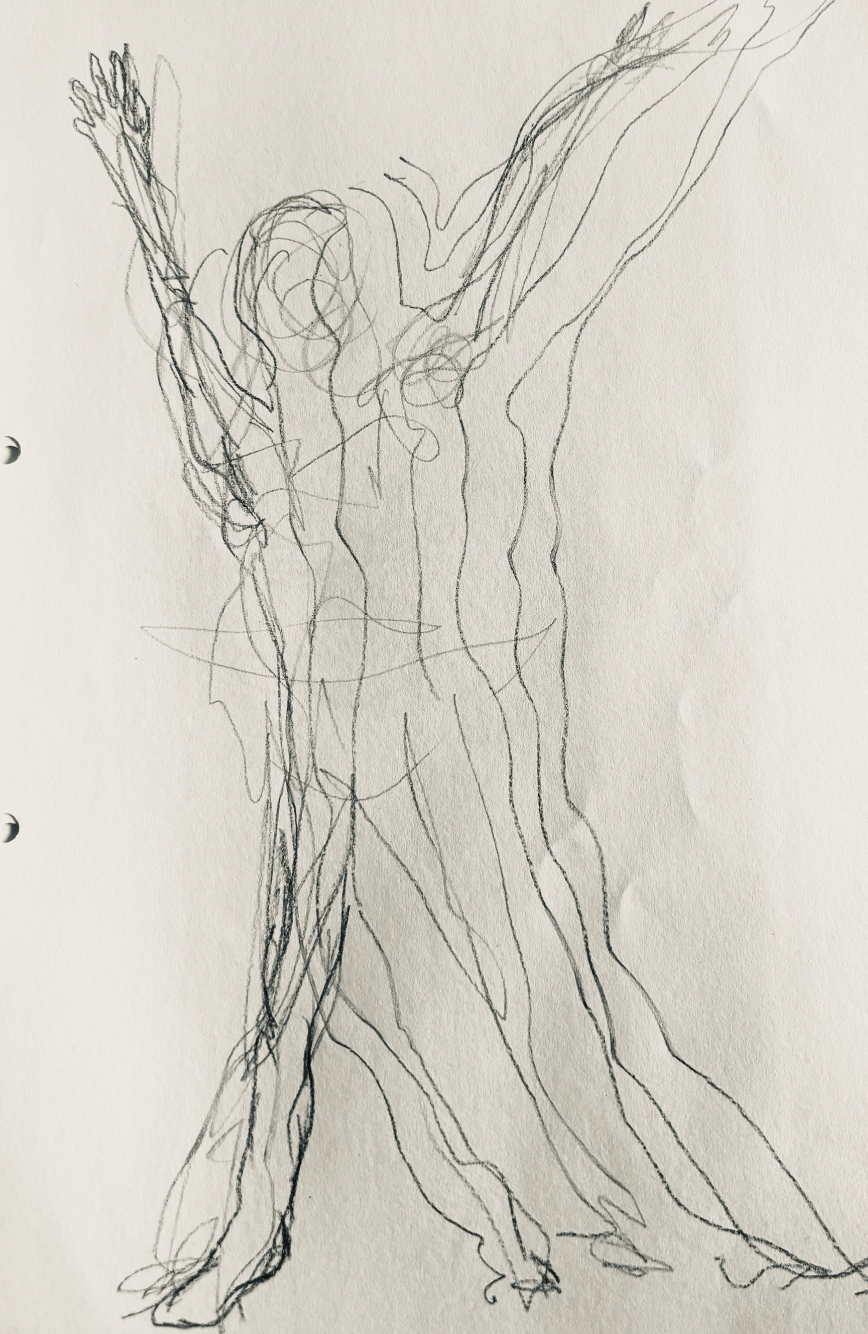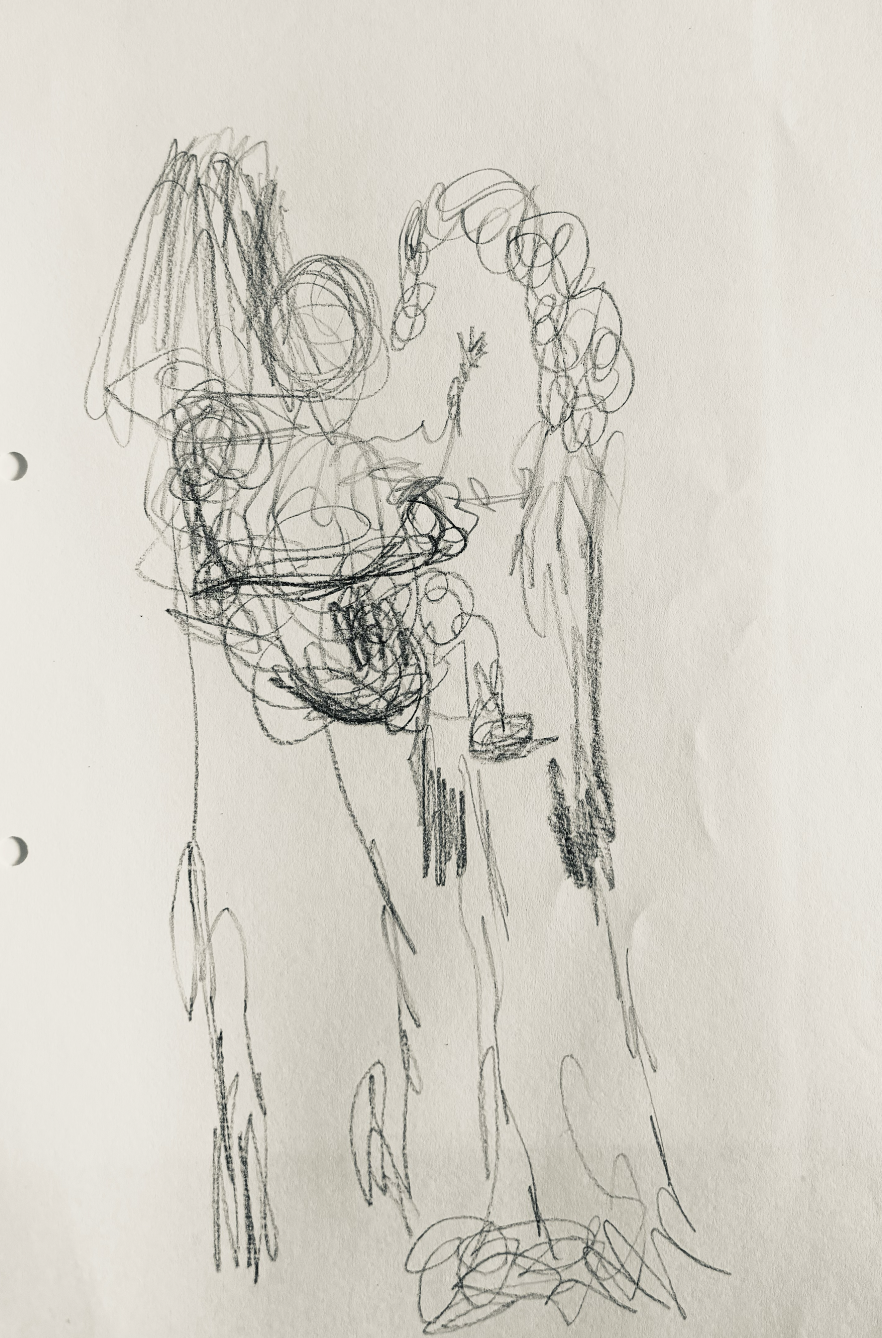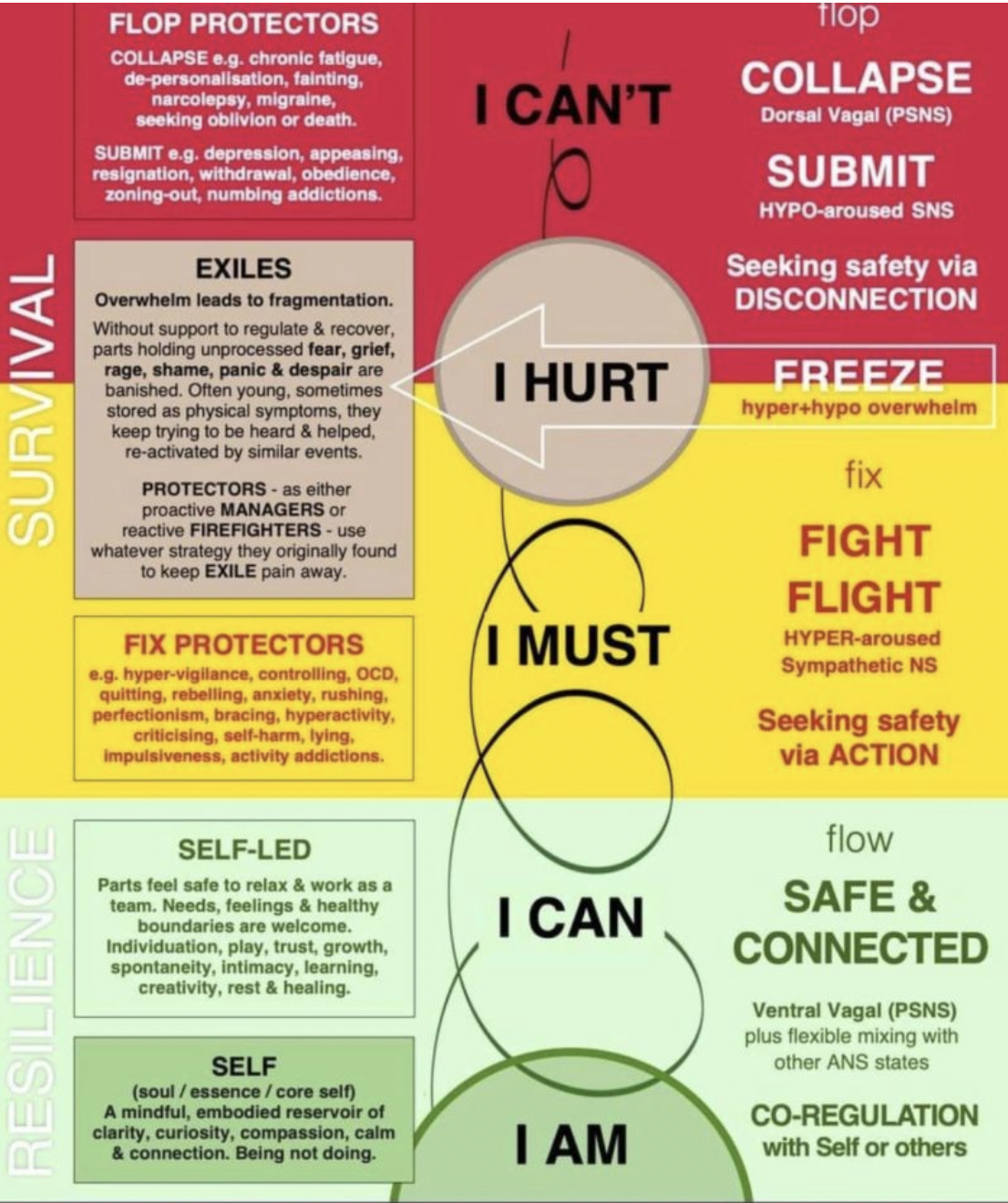The Score:
A Dance Work-in-Progress by Tanya Voges
An immersive exploration of movement and memory The Score is a new work by dance artist Tanya Voges. Collaborating with musician Belinda Gehlert and a talented ensemble of emerging dancers—Alix Kuijpers, Fern Mines, Amelia Watson, and Queenie Wu—this performance invites you to reflect on the intricate relationship between the body and our memories.
Drawing on current neuroscience research, including insights from polyvagal theorist Stephen Porges and renowned neuroscientist Bessel Van Der Kolk, whose seminal work The Body Keeps the Score examines how we embody pre-verbal experiences, The Score delves into the emotional landscapes that shape our identities. This improvisational dance work embodies various emotional states and relational dynamics, exploring pathways to healing through movement. The Scores developed during and inbetween the residencies, are being responded to by Belinda to create an original soundscape and she will also perform live with the dancers to cultivate responsive improvisational music using violin. Interactive scores emerge from the dancers who name what they are doing and share that micro poem to each other to generate new responses in the moment of performance.
These graphics that reference states of being from a polyvagal perspective, have informed development of scores during the first stage of development. Some of the explorations of those improvisations are viewable in the first video at the top of this page. Within the first stage of creative research and development, the same score has been used for musician and dancer. Sometimes it is a conversation between dancers, or between the dance and sound. The metaphor holds the key to the aesthetics of this process. From the words and these graphics, personal association to the various states of being -safe & connected, flight& fight, collapse & submit- the movement vocabulary is starting to build.
Key Moments of development: The Score
Dance Residency at The Mill Adelaide May- November 2024 with dancers Alix Kuijpers, Fern Mines, Amelia Watson and Queenie Wu and Musician Belinda Gehlert
Support through the Independent Choreographers Program by Dancehouse, Melbourne, with weekly studio practice organised at Restless Dance Theatre and Lion Arts Centre Studio and Mentorship with Priya Srinivasan, Bec Reid and Josh Wright August- December 2024
End of Residency Showing at The Mill on Friday November 15th, 2024 (Residency Aims- share practice of improvisational scores, supporting artist wellbeing with nervous system regulation to compliment the project’s subject matter addressing the physical responses to perceived and real traumas and the “score” that the is left on the body from non-verbal and pre-verbal life experiences)
Upcoming Creative Development Residency will be Inspace at Adelaide Festival Centre, January 27-February 8th with an end of residency showing on Thursday 7th February, 2025 (Residency Aims- explore the documented scores and creative process artefacts to develop a full length work with a dramatically sound choreographic arc. Document alternative presentation formats- The Score as a staged work, an installation, a gallery performance, an interactive audience participatory experience, a local performance, interstate performances, opportunities for translation onto other dancers and musicians - eg older dancers groups or student works like at PPY Sydney, Link WAAPA and ACArts. Invite key people from the Arts Community to the showing to seed opportunities for presentation and find potential producers for this and my future works.)
Performance excerpts of The Score at Art Gallery of South Australia on January 3rd and March 7th, 2025 for First Friday events within the major exhibition Radical Textiles
Dance Drawing by Tanya Voges, Dancer Queenie Wu
The Score Drawing of the dancer Amelia Watson
Improvisation processes
The studio practice allows for the group of dancers to calibrate with one another, and flex that muscles that is a process of attuning to the group dynamics. The practice is about moving mindfully with one another, through warm up to find the tools of improvisation become a way of communicating with one another. Without the external eye of the audience, this process of practicing improvisation technology helps develop the connectivity to self and to the others.
Within the process, the next layer is exploring the improvisation as choreographic scores. This builds a unique movement language for this particular work. Where the improvisational techniques of the first stage of working together may have been learnt throughout our diverse training institutions or within dance schools and workshop intensives from anywhere around the world, the improvisational scores that are informed from the choreographers creative research into the topics for this work, are unique to this process. It is from trialling and testing process that some of these improvisational scores will show outcomes that answer the questions posed within the improvisational scores that I set as the choreographer.
I attempt to set improvisational scores for performance that pervade direct answers or are literal in their interpretation. This layer of complexity offers the dancer and audience both a place for contemplation, deep moment to moment mindful movement, staying with the proposition and in a non narrative sense, allowing for interpretation from the viewer. The audience has a chance to see themselves in the performative exchange between the dancers, the objects, the environment and the relationship to the music and the audience
Influences
Influenced by the written scores and documentation of dances by Johnathon Burrows (The choreographers handbook, Writing Dance) and Deborah Hay (Voilà: A Dance Libretto; My Body, the Buddhist; Using the Sky) and the improvisational practices that underpin the work of Ros Crisp and William Forsythe, the compositional process of The Score is emergent. Each stage influences the next, moving from ideas crafted into scores to generate scenes that have space for the collaborators to interpret original movements on the theme, that is observed from within the dance by Tanya whose choreographic eye captures the trace and records it through a process of reflexive writing practice. This influences the next stage of the written scores.
Additionally, historical influences from dance luminaries like Martha Graham, Loie Fuller, and Isadora Duncan can be seen in the costuming and props, adding rich layers of context to the performance. Metaphors in the interaction with the fabrics used with pleats that are permanent creases that change the shape of the material, like the folds and creases in our skin, on our hands and held in our facial expressions from the impact of our lives. The fold is a significant action in this work.
(The below sketches are my work but not all the images belong to me but are references for influences as a mood board of sorts)





